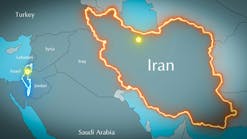US Tenth District 2Q energy activity expanded slightly
The Federal Reserve Bank of Kansas City’s second-quarter Energy Survey revealed that energy activity in the Tenth District expanded slightly, while expectations for future activity declined.
Firms reported that oil prices needed to be on average $66/bbl for substantial increases in drilling to occur, up slightly from 6 months ago and higher than both current prices and prices expected over the next 2 years.
“Firms in our region expect oil prices to remain profitable in coming years, but just marginally so,” said Chad Wilkerson, Oklahoma City branch executive and economist at the Kansas City Fed. “Meanwhile, low natural gas prices are expected to persist. As such, future drilling plans have eased somewhat.”
The Kansas City Fed’s quarterly Tenth District Energy Survey monitors oil and gas-related firms located and headquartered in the Tenth District, with results based on total firm activity. The Tenth District encompasses the western third of Missouri; all of Kansas, Colorado, Nebraska, Oklahoma, and Wyoming; and the northern half of New Mexico.
Survey results reveal changes in several indicators of energy activity, including drilling, capital spending, and employment. All results are diffusion indexes—the percentage of firms indicating increases minus the percentage of firms indicating decreases.
Indicators
The drilling and business activity index increased from 0 to 7, indicating a modest expansion following flat activity in this year’s first quarter. The delivery time index rose and the wages and benefits index also remained positive. However, the employment index was flat, and the revenues, profits, and access to credit indexes decreased.
Most year-over-year indexes decreased moderately. The year-over-year drilling and business activity index fell from 17 to -11. Indexes for revenues, profits, and access to credit also dropped into negative territory. Year-over-year indexes for capital expenditures and delivery time inched up, while the pace of expansion for the employment, employee hours, and wages and benefits indexes eased.
Expectation indexes fell, with the future drilling and business activity index dropping from 17 to -26, the lowest level since first-quarter 2016. The future revenues, capital expenditures, profits, employee hours, and access to credit indexes were negative. On the other hand, the future employment index was flat, while the delivery time and wages and benefits indexes remained positive.
The oil price expectations index slowed from 34 to 15, and the natural gas price expectations index rose from 3 to 10.
Special questions
This quarter firms were asked what oil and gas prices were needed on average for a substantial increase in drilling to occur (in alternate quarters they are asked what price they need to be profitable on average across the fields in which they are active).
The average oil price needed was $66/bbl, with a range of $50-$75/bbl. This average was up slightly from $63/bbl in fourth-quarter 2018, but below the price reported in second-quarter 2018. The average gas price needed was $3.40/MMbtu, with responses ranging from $2.25-$5/MMbtu.
Firms were again asked what they expected oil and gas prices to be in 6 months, a year, 2 years, and 5 years. Expected oil prices dipped since the last quarter but were higher than price expectations from fourth-quarter 2018. The average expected West Texas Intermediate prices were $57/bbl, $60/bbl, $63/bbl, and $70/bbl, respectively.
Expectations for gas prices continued to decline. The average expected Henry Hub gas prices were $2.52/MMbtu, $2.59/MMbtu, $2.79/MMbtu, and $3.16/MMbtu, respectively.
Firms were also asked about any initiatives regarding water use and management. While 37% of surveyed firms reported they hadn’t undertaken any initiatives related to water management, 30% reported they’ve invested in water infrastructure. Thirty percent of firms indicated they’ve begun initiatives to recycle and reuse water and 20% of contacts noted they have worked with landowners or local governments to deal with water management issues.
Finally, respondents were asked about expenditures on software, application development, and related personnel. About 60% of firms reported they have increased these expenditures over the past 2 years, and 60% also expect to increase these expenditures over the next 2 years.

